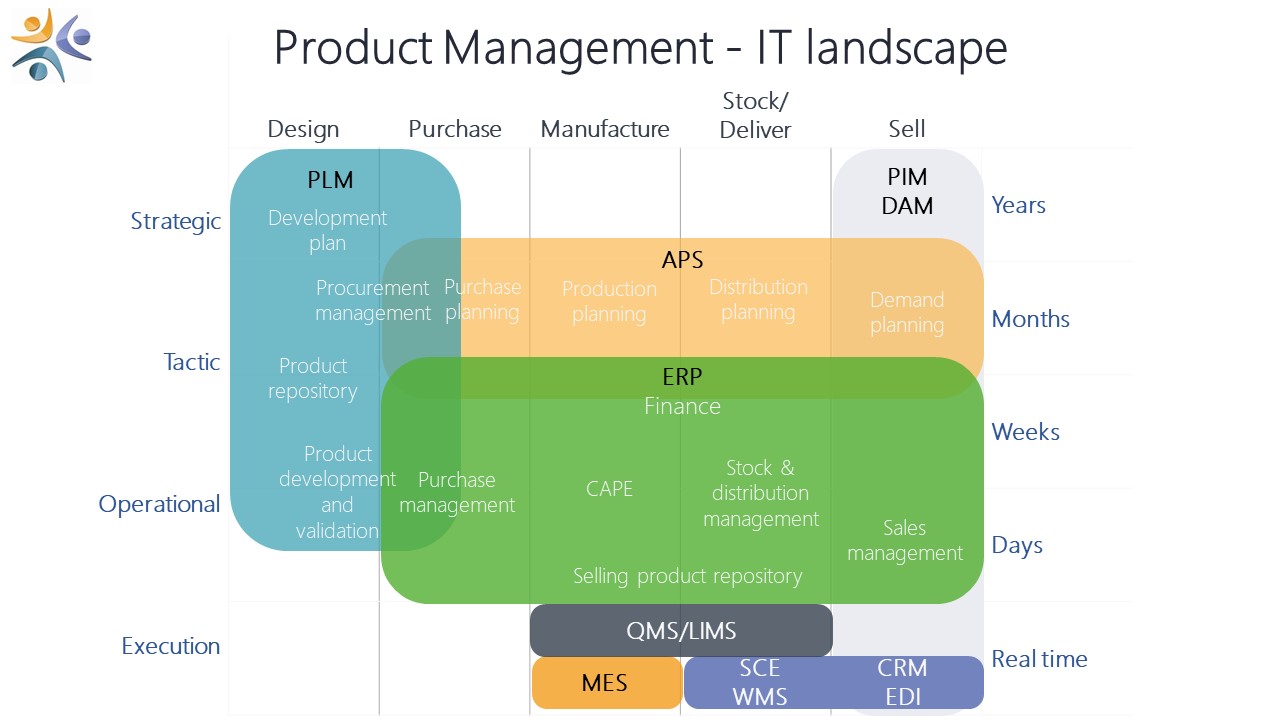
Digitalization induced major changes in the corporate world. Companies felt indeed the necessity to redefine their position and organization to meet the new habits created by new technologies. The client is at the center of the chain value.
The amount of data created by new consumption habits like online purchase and social networking became an important source of information for companies, especially for Consumer Packaged Goods (CPG) industries. Companies in these industries needed solutions to store, process, and analyze these data which induced the software industry to thrive.
Main CPG software
From website design to project management, companies now use software for accounting, building their website, managing online payment, marketing, and customer relationship management, human resources, etc. But the real challenge for CPG companies is to manage all the data, information, and therefore documents generated during the entire product life cycle – from the idea to customer relation. To do that, there is a wild range of software. Let us look at 5 of them.
First of all, the PLM software (Product Lifecycle Management) whose role is to centralize, share and secure data, information, and documents related to product development and to keep track of its changes. It allows all departments working in product development to work together around the same data pool.
Then, a common solution is ERP (Enterprise Resource Planning). It notifies what is physically or accountably done, it allows to plan and track the value chain, manage inventory, quantify profitability, and provides a real-time picture of financial status.
To back up those two first solutions, CPG companies usually use APS (Advanced Planning System) software, which supports the planning processes and organizes the supply chain to ensure it is perfectly adapted to the company’s needs, and MES (Manufacturing Execution System) which is a solution for managing production in real-time providing complete traceability of the manufacturing information. It ensures the continuity of data between the ERP and the logistics chain.
At the other end of the operations, there is CRM (Customer Relationship Management) software that helps to listen and know customers, gives visibility on the relation with them, therefore, assisting in providing a customized offer, hence improving customers’ loyalty.
Finally, there is the PIM (Product Information Management) that collects data from all the other software to distribute them in an efficient and precise way to sales channels: e-commerce platforms, printed catalogs, marketplaces, etc. PIM guarantees that all published contents are up to date.
All these solutions have one common objective: to ensure data sharing around the company at each step of its operations.
Information continuity: interface solution with each other
To optimize its operations, a company needs to streamline the IT activity of every department. To do that, it has first to identify its needs in software and choose the right ones to achieve its goals. Then, considering the amount and the importance of data, it must ensure a smooth flow of information at each step of its operations.
All Software described above can, and in fact, must be interfaced with each other. The PLM is the first solution operated in the operations. It allows all actors and factors to work together around a unique version of the truth as it is the base of all data used eventually. That is why the choice of the PLM solution is critical. What a better way to understand the importance of interfacing all these than a figure of an IT landscape in project management:

Thanks to all these CPG Software all based on the same data, companies will be able to enhance data reliability, external (supplier, providers, design agency, retailors, etc) and internal collaboration, production efficiency, customer loyalty, etc. Because of the importance of interfacing the solutions, when in the process of choosing a new solution, companies should work with a supplier capable to interface its solutions to the software already in place in the infrastructure.































